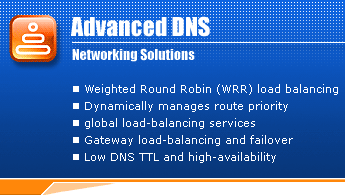- Allows inbound/outbound Weighted Round Robin
(WRR) load balancing of routes and gateways.
- Dynamically manages route priority.
- Provides global loadbalancing services.
- Supports Gateway loadbalancing and failover.
- Provides routing and loadbalancing based on the
geographical/country location of the client (via proprietary built-in
IP database).
- Provides routing and loadbalancing based on service
availability and L4/L7 service health checks.
- Low DNS TTL and high-availability based on multiple
IP DNS resolutions.)
Deficiencies of a regular DNS system
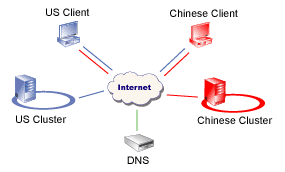
A regular DNS server resolves user requests regardless of
their geographic location or client/server proximity
There are many cases when a company may need to
support a reliable uplink connectivity through multiple ISP providers
for redundancy and scalability purposes. In addition, it may need
to support web services in several languages (e.g. English and Chinese).
The company can not achieve consistent bandwidth utilization using
BGP routing because it is not capable to distinguish between over-utilized
and underutilized lines. In addition, BGP does not allow routing
based on the geographical (country) location of the client (user).
The Intelligent DNS solution
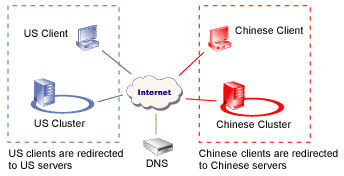
The SysMaster DNS server resolves user requests based on their
geographic location, client/server proximity or bandwidth availability.
The SysMaster Advanced DNS routing allows scalable
management of unlimited number of uplink gateways. The device will
check (based on defined rules) the availability of gateways and
associated routes to change the status of IP address Responses for
DNS requests. If an underlying line goes down the system will remove
the associated IP address from rotation, thus the DNS responses
will contain only IP addresses that are reachable form the Internet.
One the uplink becomes active again, the disabled IP address will
be included into the WRR rotation. Furthermore, system administrators
can define the weight for each uplink so that the inbound traffic
is distributed according to the line capacity.
Loadbalancing and failover of uplinks and gateways
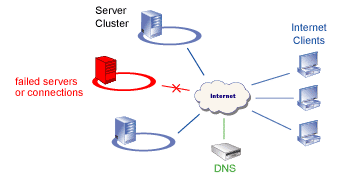
The SysMaster DNS server senses all interruptions
in the availability/load of the managed server clusters and
redirects clients only to available or least loaded servers.
SysMaster allows WRR loadbalancing and failover
of gateways/uplinks. System administrators can define a weight value
for each individual gateway that corresponds to the physical line
capacity, thus allowing full bandwidth utilization and sustained
system performance. In addition, gateway weights can also be dynamically
managed via advanced traffic rules to dynamic management of line
utilization and performance. Gateways that are disabled or unavailable
are automatically removed from rotation to provide complete traffic
failover to lines that are functional.
Geographical based global loadbalancing and routing
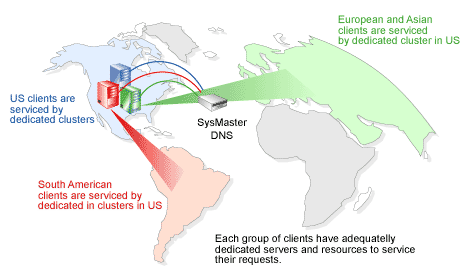
SysMaster allows remote corporate LANs to be connected
via secure connection over Internet. The device can operate as a
VPN gateway for each network segment to allow remote corporate networks
to be aggregated into one large virtual corporate network. Supported
gateway infrastructure allows inexpensive file, printer, and service
sharing among remotely located corporate networks. SysMaster natively
provides network Address Translation (NAT) services to allow easy
connection configuration and better LAN security.
Global routing based on client proximity
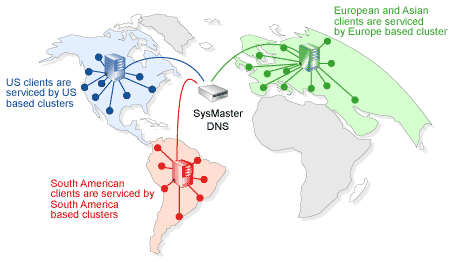
SysMaster does not require additional servers to
provide secure authentication. Once keys and certificates are generated
by the SysMaster, they are distributed to the VPN clients. The device
allows key and certificate generation and signing for x509 and RSA
keys. The device also includes support for third-party generated
keys/certificates such as Verisign, Thawte, and others. Key/certificate
imports and exports are also fully supported.
|



